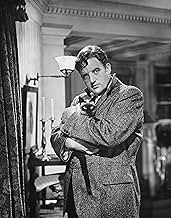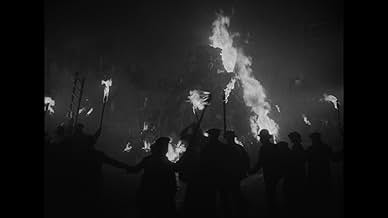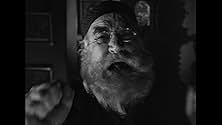AVALIAÇÃO DA IMDb
7,3/10
4,4 mil
SUA AVALIAÇÃO
Adicionar um enredo no seu idiomaA promising classical musician finds his life poisoned by a music hall dancer -- and by the strange gaps in his memory.A promising classical musician finds his life poisoned by a music hall dancer -- and by the strange gaps in his memory.A promising classical musician finds his life poisoned by a music hall dancer -- and by the strange gaps in his memory.
- Direção
- Roteiristas
- Artistas
- Prêmios
- 2 vitórias no total
Harry Allen
- Pot Man
- (não creditado)
Radford Allen
- Boy
- (não creditado)
Jimmy Aubrey
- Drunk
- (não creditado)
J.W. Austin
- Det. Insp. King
- (não creditado)
Brandon Beach
- Concertgoer
- (não creditado)
Wilson Benge
- Waiter
- (não creditado)
Frank Benson
- Newsman
- (não creditado)
Arthur Berkeley
- Pub Patron
- (não creditado)
Ted Billings
- Pub Patron
- (não creditado)
Lulu Mae Bohrman
- Concertgoer
- (não creditado)
Clifford Brooke
- Gas Company Watchman
- (não creditado)
Bob Burns
- Concertgoer
- (não creditado)
- Direção
- Roteiristas
- Elenco e equipe completos
- Produção, bilheteria e muito mais no IMDbPro
Avaliações em destaque
In this variation on the Jekyll and Hyde story, a composer has sporadic episodes where his subconscious takes over and he has no recollections of his actions during these lapses when he comes to. This film reunites Cregar and Sanders with director Brahm from "The Lodger" the previous year, and, like the earlier film, it is visually opulent but the story is less than compelling. Cregar gives perhaps his best performance in this, his final film before his untimely death at age 31 just as he was coming into his own. Darnell, who would also die young, is a sensuous presence as the object of his obsession. Herrmann provides an impressive score, including a piano concerto used in the finale.
Famous Composer George Harvey Bone (Laird Cregar) turns from gentle giant to violent murdering psychopath when prompted by certain sounds - he can then recall nothing. Into his life comes tricky nightclub singer Linda Darnell who uses him to write popular songs that she can use / sell - he becomes bewitched.
Glorious piece of Grand Guignol evoking Jekyll and Hyde and a foggy, chestnut roasting London. The story is well played out and full of memorable scenes without going over the top. At the centre of it all is Cregar, hugely impressive as both a sweet, gentle man and an evil killer. He is well supported by Darnell who is good at being bad and George Sanders as the psychiatrist / amateur detective. Bernard Herrman's score is one of his best and used well throughout, but particularly in the climactic scene which is truly terrific.
Glorious piece of Grand Guignol evoking Jekyll and Hyde and a foggy, chestnut roasting London. The story is well played out and full of memorable scenes without going over the top. At the centre of it all is Cregar, hugely impressive as both a sweet, gentle man and an evil killer. He is well supported by Darnell who is good at being bad and George Sanders as the psychiatrist / amateur detective. Bernard Herrman's score is one of his best and used well throughout, but particularly in the climactic scene which is truly terrific.
Though it's virtually impossible to find a copy of this buried treasure, it's worth a fair bit of digging. (The film is available on tape only, in mediocre print condition, and carried by only a handful of rental stores in the country.) It's not a brilliant film, but it has some virtuoso camera work that one would never expect to find in a filmi of its type. (Watch for the camera shot in the first seconds of the film that swings quickly up from a crowded street, through a window, and into a tight
closeup of the face of a man about to be killed - very impressive.) This is the type of film one can imagine Martin Scorsese taking an interest in - a skillful, craftsmanlike film overlooked by all but a few film buffs. The performances as well, especially Laird Cregar's, are terrific.
closeup of the face of a man about to be killed - very impressive.) This is the type of film one can imagine Martin Scorsese taking an interest in - a skillful, craftsmanlike film overlooked by all but a few film buffs. The performances as well, especially Laird Cregar's, are terrific.
Hangover Square is the last film Laird Cregar made in his brief, remarkable career. Freely adapted from Patrick Hamilton's novel, it was directed by John Brahm, photographed by Joseph LaShelle, and features a memorably thunderous score by Bernard Herrmann. Like the previous year's The Lodger, also a Cregar-Brahm collaboration, this is a killer on the loose in Victorian London movie. Aside from some fancily shot scenes early on, this would not in itself be an extraordinary film but for Cregar's portrayal of the lead character, a man who murders when he hears loud, sudden noises. In his quieter moments the man is, of all things, a composer!
There are many fine scenes in this film but it's basically Cregar's show from start to finish, and he does not disappoint. His performance is so brilliant, empathetic, nuanced, and for all the melodrama, utterly believable, that it's impossible not to focus on him at the expense of the rest of the movie.
Perhaps the best way to describe Cregar's acting style here is to imagine A Streetcar Named Desire being performed entirely inside someone's mind, with the characters of Stanley and Blanche being played by the same actor, in a Victorian setting, disguised as a murder story. One wonders where Cregar found the inspiration for such work. He was one of the greatest actors to ever grace the screen, and one of the most enigmatic. American-born, he tended to play Brits. Unlike his fellow American Anglophile actor and friend, Vincent Price, he had no education to speak of. Within a span of less than five years he went from supporting player to star. In this movie he is top-billed over Fox hottie Linda Darnell. Not too shabby for a morbidly obese man several inches over six feet in height who, while still in his twenties, was playing men well into their forties.
Cregar had a way of making even accomplished co-stars like Cedric Hardwicke and George Sanders look like amateurs by comparison. He wasn't even trying to. One should watch his films to see what a great actor is like. His roles weren't always great, but he was. Forget Sean Penn and his tantrums, or Meryl Streep's mannered Yale Drama School flair for accents. Cregar was the real deal. The only American actor I can think of who could give him a run for his money would be Brando. Sadly, Cregar was as tormented as he was gifted, was full of self-hatred, for a variety of reasons, and went on a crash diet after completing this film in the hope of becoming a romantic leading man. But he lost the weight so fast it killed him. He was twenty-eight years old.
There are many fine scenes in this film but it's basically Cregar's show from start to finish, and he does not disappoint. His performance is so brilliant, empathetic, nuanced, and for all the melodrama, utterly believable, that it's impossible not to focus on him at the expense of the rest of the movie.
Perhaps the best way to describe Cregar's acting style here is to imagine A Streetcar Named Desire being performed entirely inside someone's mind, with the characters of Stanley and Blanche being played by the same actor, in a Victorian setting, disguised as a murder story. One wonders where Cregar found the inspiration for such work. He was one of the greatest actors to ever grace the screen, and one of the most enigmatic. American-born, he tended to play Brits. Unlike his fellow American Anglophile actor and friend, Vincent Price, he had no education to speak of. Within a span of less than five years he went from supporting player to star. In this movie he is top-billed over Fox hottie Linda Darnell. Not too shabby for a morbidly obese man several inches over six feet in height who, while still in his twenties, was playing men well into their forties.
Cregar had a way of making even accomplished co-stars like Cedric Hardwicke and George Sanders look like amateurs by comparison. He wasn't even trying to. One should watch his films to see what a great actor is like. His roles weren't always great, but he was. Forget Sean Penn and his tantrums, or Meryl Streep's mannered Yale Drama School flair for accents. Cregar was the real deal. The only American actor I can think of who could give him a run for his money would be Brando. Sadly, Cregar was as tormented as he was gifted, was full of self-hatred, for a variety of reasons, and went on a crash diet after completing this film in the hope of becoming a romantic leading man. But he lost the weight so fast it killed him. He was twenty-eight years old.
HANGOVER SQUARE was Laird Cregar's last film (he died at 28) and he turns in a fine performance. You can see how haggard he looks from his 100+ pound weight lose which happened before and during the filming of this movie. His appearance and exhaustion fit well with the role of George Bone though. The scene where he carries the body to the Guy Fawkes bonfire and places it with all the mannequins is very memorable as is the ending. The film score by Bernard Hermann is excellent and the concerto Bone "writes" is believable and tense. Cregar even plays the piano very well. It is too bad he died so young after only 5 years making movies as Hollywood lost a fine talent that was just starting out. John Brahms does a good job directing the atmospheric HANGOVER SQUARE too.
Você sabia?
- CuriosidadesIn the book "A Heart at Fire's Center: The Life and Music of Bernard Herrmann," director John Brahm said this about the concerto scene: "For a long time, I had been dissatisfied with the photography of music in films. Musicians themselves are uninteresting; it is what they play that should be photographed. I myself could not read a note of music, but when Herrmann came and saw the finished film he could not believe it. I had photographed his music."
- Erros de gravaçãoThe title of Patrick Hamilton's novel, 'Hangover Square', is a play on words based on 'Hanover Square'. It is not meant to be Bone's actual address as it is in the film version, where a street sign marked 'Hangover Square' is seen.
- Citações
[first title card]
Title Card: This is the story of George Harvey Bone who resided at number 12, Hangover Square, London, S.W. in the early part of the Twentieth Century. The British Catalogue of Music lists him as a Distinguished Composer~~~
- Cenas durante ou pós-créditosOpening credits: This is the story of George Harvey Bone who resided at number 12, Hangover Square, London, S.W. in the early part of the Twentieth Century. The British Catalogue of Music lists him as a Distinguished Composer~~~
- ConexõesFeatured in Biografias: Linda Darnell: Hollywood's Fallen Angel (1999)
- Trilhas sonorasHave You Seen Joe?
(uncredited)
Music by Lionel Newman
Lyrics by Charles Henderson
Performed by Kay St. Germain Wells
[Netta (Linda Darnell) sings the song at the bar hall in her opening performance]
Principais escolhas
Faça login para avaliar e ver a lista de recomendações personalizadas
Detalhes
- Data de lançamento
- País de origem
- Idiomas
- Também conhecido como
- Hangover Square
- Locações de filme
- Empresa de produção
- Consulte mais créditos da empresa na IMDbPro
Bilheteria
- Orçamento
- US$ 1.154.000 (estimativa)
- Tempo de duração1 hora 17 minutos
- Cor
- Proporção
- 1.37 : 1
Contribua para esta página
Sugerir uma alteração ou adicionar conteúdo ausente

Principal brecha
By what name was Concerto Macabro (1945) officially released in India in English?
Responda





























